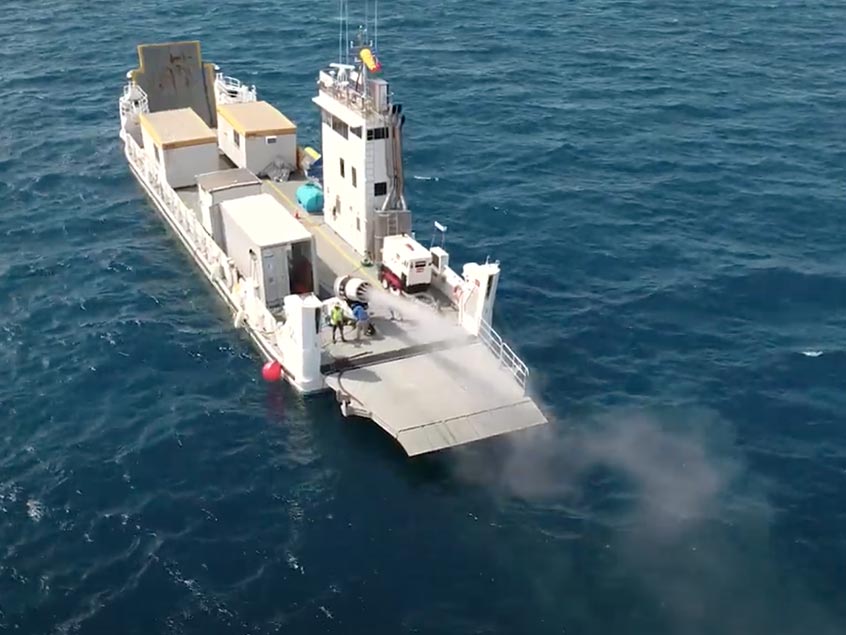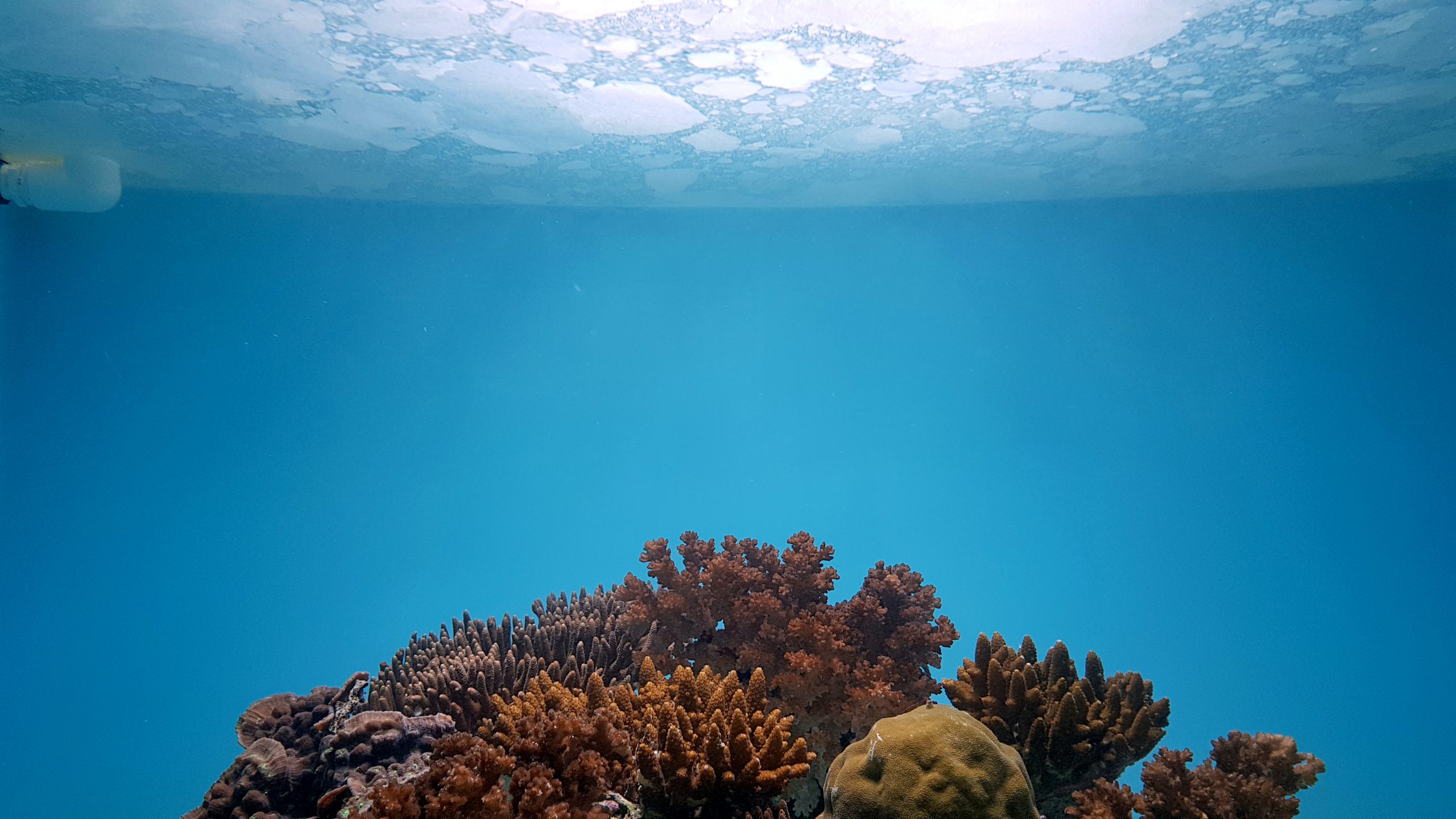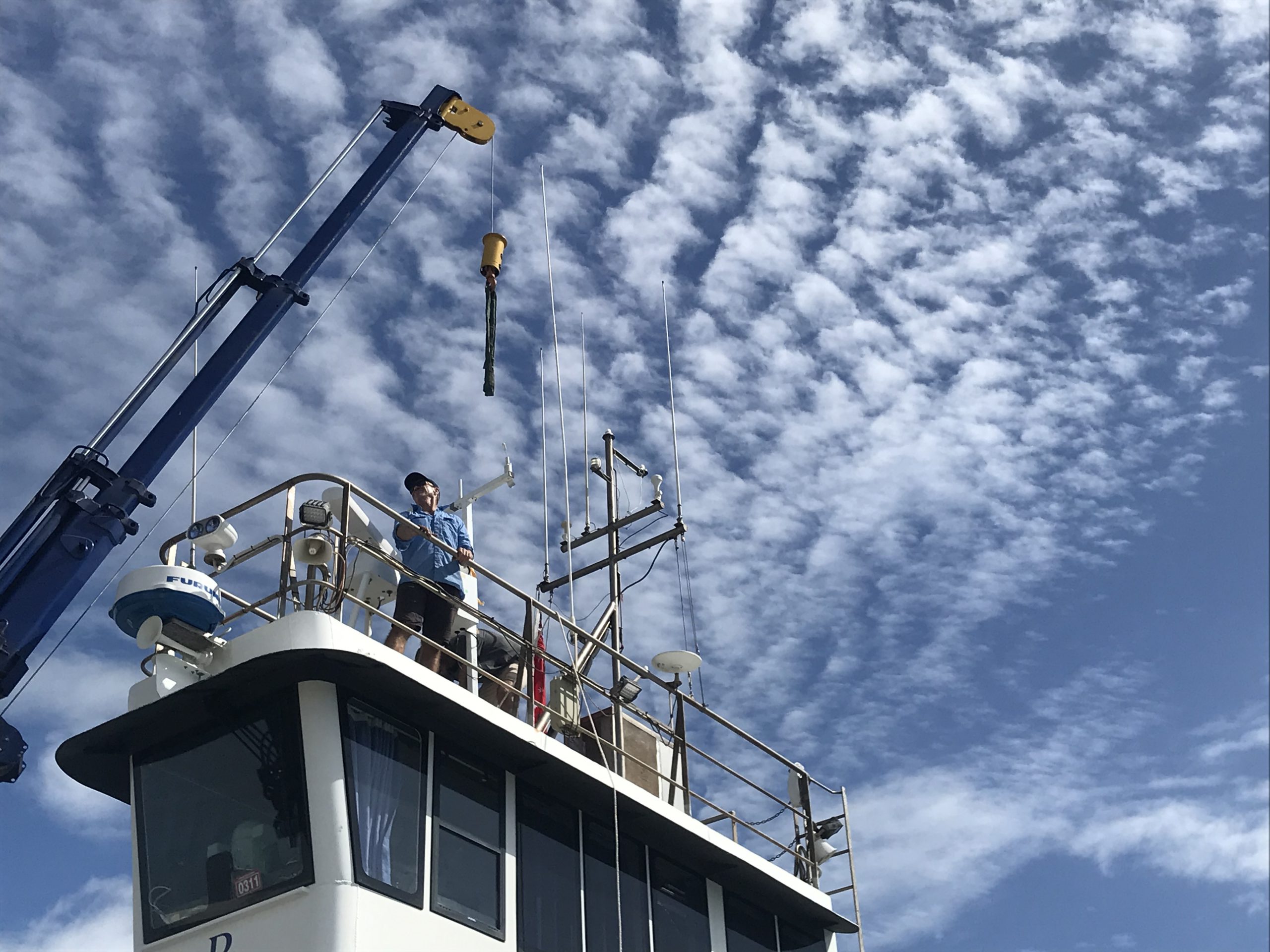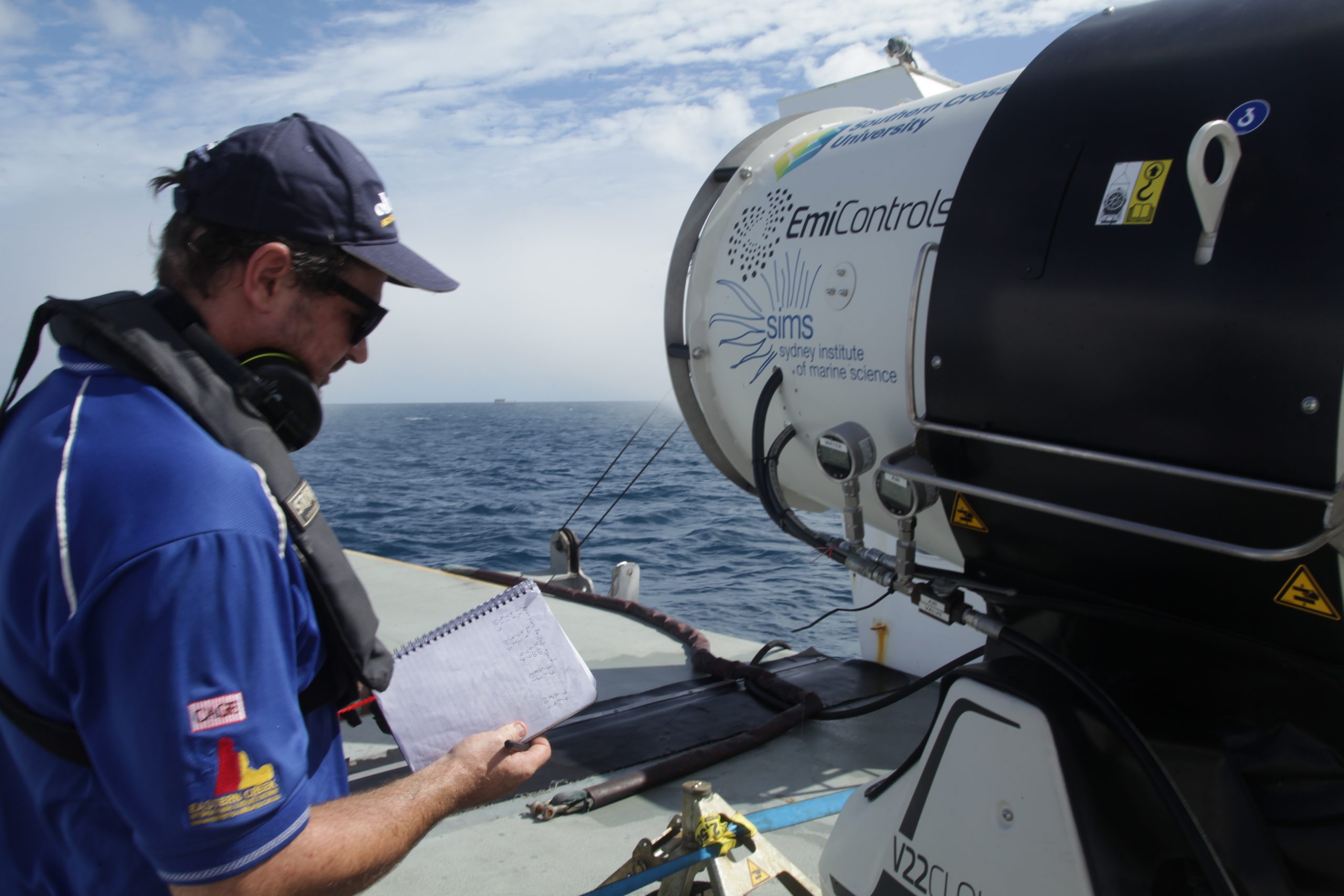Cooling and Shading

Field trial of cloud brightening. Photo courtesy of Southern Cross University
The RRAP Cooling and Shading R&D Subprogram aims to investigate technologies to prevent or reduce bleaching stress on coral reefs by reducing the amount of solar radiation reaching the Reef.
This includes the concepts of creating shade through clouds, mist, fog or surface films to reduce solar radiation during high-risk periods for coral bleaching.
The interventions being investigated range from the scale of an individual reef to protecting the entire Great Barrier Reef Marine Park.
Cooling and shading interventions aim to maintain existing biodiversity, cultural values, and ecosystem services, rather than supplementing or replacing them.
Providing they can be successfully deployed at large scales, cooling and shading interventions have amongst the highest potential of the interventions being examined by RRAP. At smaller scales, targeted cooling and shading may protect high-value sites.
Modelling has shown cooling and shading interventions to be strongly synergistic with other novel interventions being investigated by RRAP as well as with traditional management techniques such as crown-of-thorns starfish control.
Despite their promise, these interventions are as-yet unproven and technically challenging to develop.
This subprogram prioritises rapid technology development and field testing to determine the technical feasibility. In parallel, a large effort will be devoted to atmospheric sampling, monitoring and modelling to inform assessment of efficacy and risk.
Cooling and shading techniques represent a deliberate attempt to temporarily alter the environment of coral reef ecosystems to relieve stress. While eco-engineering approaches are commonly used in land conservation, their application for marine conservation, as well as the proposed large spatial scales have scarce precedent. Accordingly, engagement with Traditional Owners, stakeholders and the public, along with robust governance, are as critical to achieving successful implementation as the technical and engineering development.
Scope and expected outcomes
The Cooling and Shading R&D Subprogram aims to progress both categories of cooling and shading interventions in parallel:
- those that can potentially be deployed at large scale, hundreds of square kilometres up to the entire Great Barrier Reef
- those that are likely only achievable at smaller scale, such as an individual reef or tens of square kilometres.
Cooling and shading interventions represents a temporary disturbance of the dynamic physical environment. Efficacy and risk are therefore dependent on the prevailing conditions at the location and future time of implementation.
Modelling (across multiple scales, resolutions, domains and approaches) will be required to estimate efficacy, design and interpret field experiments, optimise deployment strategies, and quantifying risk.

Testing surface films in the National Sea Simulator, AIMS

Field trial of cloud brightening. Photo courtesy of Southern Cross University.
This subprogram also aims to address the significant knowledge gaps in atmospheric and meteorological conditions over the Reef, with an early foundational science component in the atmospheric survey, atmospheric monitoring and modelling projects.
It includes identification and scientific investigation of risks of unintended impacts and will closely integrate with an independent effort (facilitated by the Eco-RRAP Subprogram) to enable their quantification and assessment.
Funding of development pathways for individual intervention methods is stage-gated in anticipation that not all technologies will prove viable. The timeline for reef scale interventions aims for technology transfer to industry commencing from Year Four, and for regional-scale interventions, from Year Eight to 10.
Current projects
Great Barrier Reef Atmospheric Survey
This project is focused on understanding the atmosphere and cloud physics over the Great Barrier Reef. The project collects and analyses highly detailed information over a specific area of the reef, characterising the interaction of meteorological, aerosol, and cloud microphysical processes that influence the radiative transfer of energy from sun to surface waters and corals.
Atmospheric and Meteorological Monitoring
This project extends the atmospheric survey in space and time, providing data for northern, central and southern regions of the Great Barrier Reef and across seasons, creating a data set that will inform GBR-wide assessment of atmospheric conditions.
Environmental Modelling
The objective of this project is to develop, calibrate, and verify the models required to underpin design, proof of concept, field testing and permitting activities for cooling and shading interventions.
Sub-program Management
This project provides leadership, program management, sub-contractor management and field support services across the Cooling and Shading Subprogram. The management team will also foster collaboration, innovation and integration among projects, partners and stakeholders.
Systems Engineering
This cross-cutting project will develop engineering systems necessary to deliver the cooling and shading interventions, as well as review and update the ongoing engineering feasibility of each intervention.
Fogging Development
This project will progress fogging technology and undertake on-reef proof of concept experiments to demonstrate a seawater fogging system aimed at localised cooling and shading of reef environments.
Cloud and Sky Brightening Development
This project progresses cloud and sky brightening technology to on-reef proof on concept experiments, demonstrating sea salt aerosol cloud condensation nuclei generating technology at scale.
Subprogram lead:
Subprogram team:
Brendan Kelaher, SCU
Peter Wilson, SCU
Bradley Eyre, SCU
Mark Baird, CSIRO
Matthew Woodhouse, CSIRO
Daniel Rosenfeld, HUJ
Matthew Cleary, USYD
Ian Jones, USYD / SIMS
Robyn Schofield, UMELB
Yi Huang, UMELB
Stephen Siems, Monash
Alain Protat, BOM
Jorg Hacker, ARA
Wolfgang Junkermann, ARA
Ron Allum, RADSS
Alverman Soster, EmiControls
Philipp Mayr, EmiControls
Gregorio Centurion, Quaternium



